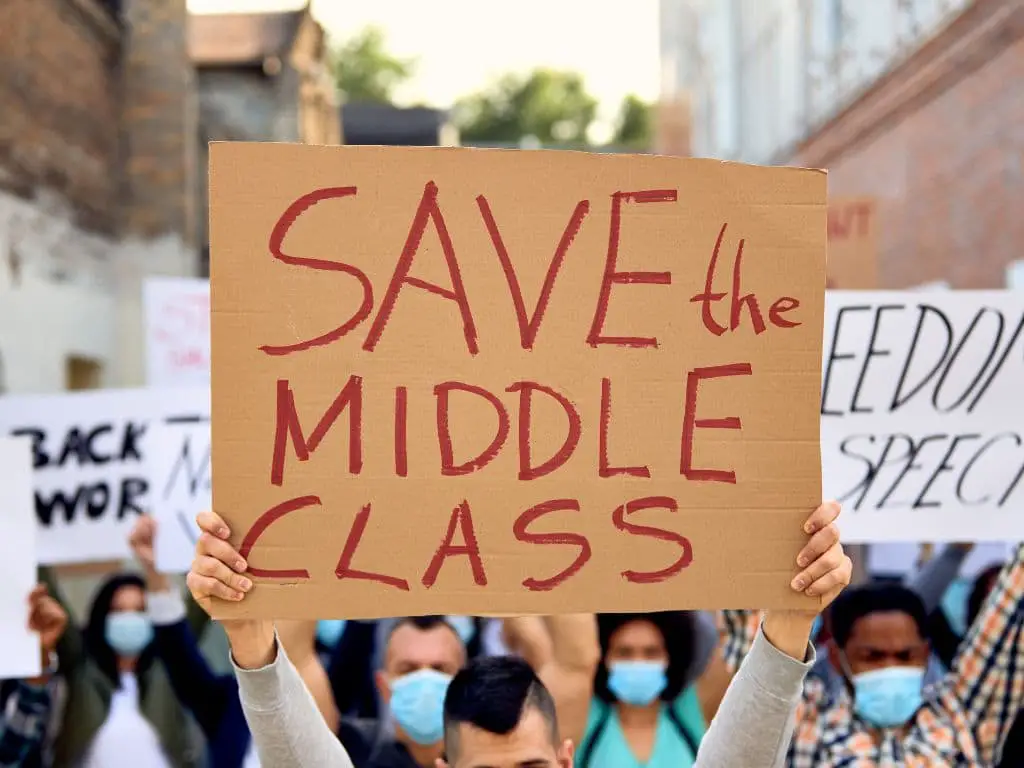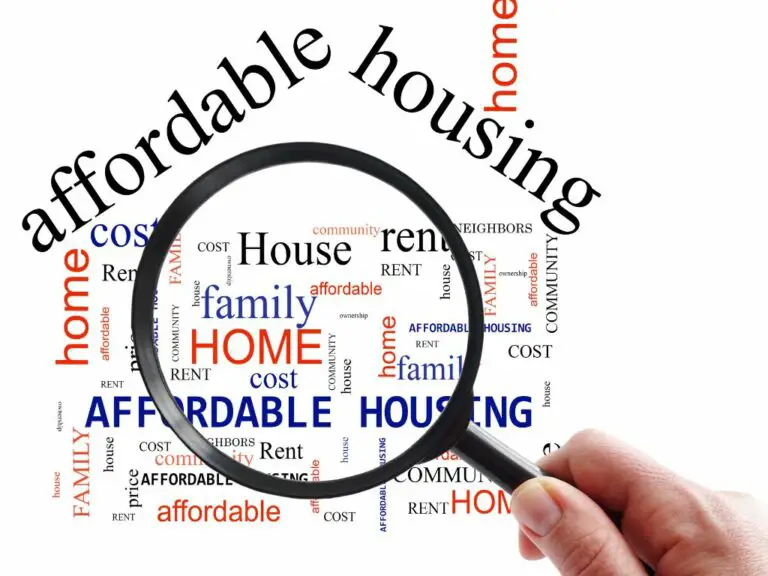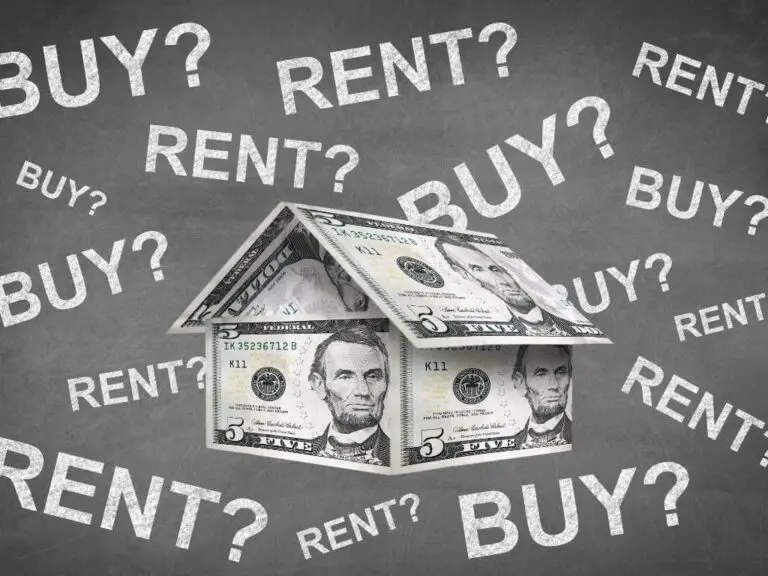What Is Middle Class Income in Texas?
The middle class is a socioeconomic demographic encompassing individuals and households who fall between the working class and the upper class. The middle class plays an important role in the economy, as these households have significant buying power and financial security that contributes to economic growth and stability.
Middle class income in Texas is defined as households earning between approximately $45,000 and $135,000 per year, according to the Pew Research Center. This range varies depending on factors such as cost of living, household size, inflation, and employment opportunities.
However, the middle class has faced increasing challenges in recent decades due to factors like wage stagnation and rising costs of living. This article will examine how middle class income is determined in Texas, the evolution of the middle class, and the obstacles and opportunities facing middle-class households in the state.

What Is the Definition of Middle Class?
There is no universal definition for middle class, but it is generally defined in terms of income thresholds that provide economic security and a comfortable standard of living. Middle class households typically earn incomes that allow them to afford their necessities, build savings, buy discretionary items, and invest in education. The Pew Research Center defines middle class as households earning between two-thirds and twice the national median household income. By this definition, the middle class in Texas would be households earning between approximately $45,000 and $135,000 per year.
How Is Middle Class Income Determined?
A few key factors determine middle class incomes and brackets:
- Cost of living – What is considered middle class pay can vary significantly between different areas due to differences in costs like housing, transportation, utilities, healthcare, and taxes. Middle class wages in a smaller Texas city provide more buying power than larger metros.
- Household size – Larger households require higher total incomes to maintain a similar lifestyle and economic security as smaller households.
- Inflation – As the costs of goods and services rise over time, incomes must correspondingly rise to provide the same standard of living and buying power.
- Employment opportunities – Areas with abundant middle-skill job opportunities in fields like manufacturing, healthcare, and construction tend to have larger middle classes.
What Are the Different Types of Middle Class?
There are a few sub-segments within the middle class:
- Lower middle class – Households earning between 67% and 80% of the median household income. Their economic security is tenuous.
- Core middle class – The broad middle strata earning between 80-120% of median income. They enjoy moderate economic security.
- Upper middle class – Households earning between 120-200% of median income. They have high levels of economic security and discretionary spending power.
How Has Middle Class Income Changed Over Time in Texas?
The middle class expanded significantly in Texas during the mid 20th century. However, in recent decades, incomes have stagnated for many. Real median household incomes in Texas have increased just 3% since 1979 when adjusting for inflation. As the costs of housing, healthcare, childcare, and education have risen faster than incomes, many middle-class Texans have experienced declining economic security and social mobility.
What Factors Influence Changes in Middle Class Income?
- Employment trends – The decline in well-paying manufacturing jobs in Texas and growth of lower-paying service jobs has contributed to the squeezing of the middle class. The unemployment rate also affects incomes.
- Wage growth – Slower wage growth compared to rising living costs has created financial strain. From 2000 to 2018, wages grew just 1% in Texas accounting for inflation.
- Cost of living – The prices of big-ticket necessities like housing, healthcare, education, and transportation have increased rapidly, consuming a greater share of incomes.
- Household debt – Debt burdens from student loans, mortgages, and credit cards reduce the amount of income available for spending and saving.
How Does Inflation Impact Middle Class Income in Texas?
Inflation has significantly outpaced wage growth in recent decades, reducing real incomes. Texas has experienced some periods of high localized inflation, especially in housing. From 2010 to 2018, median home prices in Austin and Dallas rose 50% while incomes only grew 15%. The higher costs of necessities disproportionately impact the middle class, resulting in less money for discretionary spending and savings.
What Are the Challenges Facing the Middle Class in Texas?
- Wage stagnation – Median hourly wages have grown just 3% in Texas since 1979 after adjusting for inflation. This slow growth in earning power has made it tougher to afford major expenses.
- Cost of living – Prices for necessities like housing, healthcare, and transportation have risen multi-fold over the past several decades. For instance, average Texas home prices have increased 150% faster than median incomes since the late 1970s.
- Employment instability – The middle class depends on stable employment. Recessions leading to job losses and unemployment create heavy financial strain.
- Access to healthcare – Medical costs and insurance premiums have surged, taking up more of households’ incomes. 1 in 5 middle-class Texans lack health insurance.
- Student debt – College costs in Texas have jumped by over 250% since the 1980s, saddling households with unprecedented loan debt.
How Do Wages and Salaries Affect the Middle Class in Texas?
Wages and salaries are a primary determinant of middle-class income and security. Middle-skill occupations in fields like manufacturing, construction, healthcare, and education have traditionally provided incomes that allow Texas households to afford homeownership and other pillars of an economically secure middle-class lifestyle. However, the decline in manufacturing and stagnation of pay in other sectors has reduced access to these middle-class earning opportunities. Boosting pay in in-demand fields like healthcare and information technology would grow the middle class.
What Role Does Employment Play for the Middle Class in Texas?
Stable, consistent employment provides the foundation for middle-class security and mobility. Those with college educations have historically enjoyed low unemployment and more insulation from labor market fluctuations. However, automation, offshoring, and recessions have also led to job losses for many credentialed white-collar workers. Boosting higher education access and affordability as well as implementing programs to re-train displaced workers can protect middle-class employment opportunities.
What Is the Specific Income Requirement for Middle Class Status in Texas?
According the Pew Research Center’s definition of two-thirds to two times the national median household income, the minimum threshold to be considered middle class in Texas is approximately $45,000 for a household and $67,500 for a family of four. However, higher incomes are needed in major metros. For instance, over $60,000 for a household or $100,000 for a family would be required to maintain a middle-class lifestyle in Houston or Dallas when accounting for costs.
How Does Cost of Living Vary Across Different Parts of Texas?
Major metropolitan areas like Houston, Austin, Dallas, and San Antonio have significantly higher costs of living compared to smaller cities and rural areas. Housing and transportation costs in particular drive the gaps. Median home values top $250,000 in Austin but can be half that in smaller towns. Areas with booming economies and surging populations like the Texas Triangle region have also seen housing supply limitations drive up prices. However, costs remain modest in areas with weaker job markets.
How Does Economic Inequality Affect the Middle Class in Texas?
While Texas has significant upper class wealth, it also has substantial lower class poverty. Texas has one of the highest Gini coefficients of income inequality in the U.S. This gap between the high and low ends of the income spectrum has contributed to the hollowing out of the middle class from both directions. Reducing inequality through targeted social programs and policies aimed at boosting lower-skill wages could help rebuild the middle class.
What Job Opportunities Pay Middle-Class Wages in Texas?
- Skilled trades like welding, electrical work, and plumbing
- Nursing and other allied healthcare roles
- Teaching positions in public school districts
- Civil service jobs like police, firefighting, and municipal government
- Oil/gas and utility industry jobs
- Engineering and high-tech jobs in metropolitan hubs
- White-collar roles in accounting, marketing, sales, and finance
- Small business owners in sectors like construction, restaurants, and real estate
How Can Texans Improve Their Financial Security and Quality of Life?
- Pursuing higher education or specialized trade skills to access better-paying jobs
- Living in affordable areas or relocating to areas with lower costs
- Buying modest, moderately-priced homes and avoiding excessive housing burdens
- Careful family budgeting and limiting unnecessary expenses
- Paying off high-interest debts and maintaining good credit
- Having adequate insurance to shield from risk and unexpected costs
- Making use of government social support programs as eligible
- Saving and investing during earning years to build financial cushions
Which Government Programs Support the Middle Class in Texas?
- Social Security and Medicare providing retirement income and healthcare
- Veterans benefits for qualifying middle-class households
- Federal student loans and grants helping finance higher education
- Medicaid providing healthcare support for lower-income households
- Public schools and universities delivering affordable education
- FHA loans promoting affordable homeownership
- Tax credits like Child Tax Credit easing family costs
How Do Taxes Impact the Financial Stability of the Middle-Class Households?
Texas does not have a state income tax, which benefits the middle class by reducing households’ overall tax burden. The state relies heavily on sales and property taxes. While the sales tax is regressive in nature, impacting lower earners the most, the lack of an income tax helps shore up the middle class compared to some other states. Property taxes in Texas are high relative to other states and have risen rapidly in cities with hot real estate markets, consuming a significant portion of middle class incomes. Capping the growth in property taxes would support the middle class.
In summary, the middle class in Texas is defined by income thresholds of approximately $45,000 to $135,000 that enable financial security and a comfortable lifestyle. However, rising costs of living combined with stagnating wages have squeezed middle-class households and reduced economic mobility. Addressing issues like healthcare affordability, economic inequality, and the state’s regressive tax structure combined with major investments in education and skills training will be key to rebuilding Texas’ middle class.
Frequently Asked Questions
-
What does smart housing stand for?
What is a smart home? Smart homes are a home that can be controlled from any location via an internet connection.
-
What is the average salary for a person living in Texas?
The average Texas annual wage was $57,382 in the fourth quarter 2018, which is slightly more than the $56,945 average for the United States and 12th overall.
-
How much do you have to make to qualify for smart housing?
It requires an annual income of between $26,700 and $36,500.
-
What is middle-class income in Texas?
To be classified middle-class, a three-person household should have earned between $51,962 and $155,902, while four-person families must make around $60,000 to $180,000.
-
What is a livable wage in Texas 2022?
A single person living in Dallas County will have to make $17.82 an hour by 2022 to meet their basic needs. To support their basic needs, a single parent with one child will have to make $33.62 an hour.
-
What are the 5 social classes?
Gallup asked Americans for their opinions over a long period of time to determine where they fit into the five classes. These are just five examples of the overall approach taken by both researchers and popular speech.
-
How much money does a single person need to live comfortably?
To live comfortably, a person must make $66,434 after tax. An individual can spend $19,930 for wants, and leave $13,287 to save or pay down debt.
-
How much is $18 an hour monthly?
What is the monthly cost of $18 per hour? If you are working 40 hours per week, that’s $2,880 per month, before taxes.
-
Can a person live without money?
Bartering is a way for people to survive without having to spend money. It includes supplies and transportation. It is one of the best ways to ensure that people have what they want and nothing goes unaccounted for.
-
What is considered low income for a single person in Texas?
According to government guidelines, “low income” means that a household’s annual income is below the Federal Poverty Level. The 2019 FPL for a household of one was $12,490 per year. This means that one person earning less than $25,000 per year is considered to be low-income.
-
What state is not too hot and not too cold?
San Diego has a beautiful, year round climate. The weather is perfect all year. It doesn’t get too hot or too cold. There is very little California fog. However, it melts away quickly when it rolls in. People! Winters are averaged at 57 F and summers at 72 F72 F.
-
Who qualifies for smart housing?
There are three options to be eligible for SMART Housing: financial aid, low-income or disability. You automatically become eligible if you receive need-based financial assistance. You will have to show that you earn less than the median income in the specific area where the property is located.
-
What is considered middle class?
Who is the middle-class? Pew Research Center broadly defines the middle class as households that earn between two and three-quarters of America’s median household income. This means that single Americans can expect to earn between $30,000 and $90,000.
-
How long is the waiting list for Houston Housing Authority?
Each site has a different waiting period. For persons below the age of 62, the waiting period at a site for public housing is generally 18-24 months. For 1-bedroom apartments, the waiting period is longer. It can take up to 24 months.
-
Is Dallas housing authority waiting list open?
The Dallas Housing Authority’s Mainstream Section 8 Housing Choice Voucher Waiting List is open. Applications will be accepted starting January 21st, 2020 at 9:00 a.m. CT until further notice.







